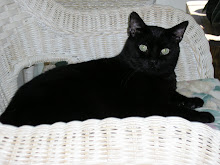50 Years On, and Moving Forward
It had to
have been hot and muggy; of course this was Washington DC in August. Organizers for the rally for equality and
jobs on the Mall fretted that not enough people would show up. After all, this was 1963; there was no
Internet, therefore no blogs, and no twitter. No way for people to hear about the rally except mail, phones, hand
fliers, and word of mouth.
A lot of
people must have done a lot of talking, because 200,000 people came by bus,
train, and whatever they could to get to the Mall on August 28, 1963. There they gathered, mingled, heard protest
songs, and orations of inspiration. And they didn’t seem to mind the infamous
Washington humidity one bit.
The main attraction was the Rev. Dr. Martin Luther King
Jr., leader of the Southern Baptist Conference, who was already making a name
for himself in the American civil rights movement. His performance climaxed a day of hope and
the four words he used in his finale, “I have a dream,” have taken on a life of
their own in American history.
Those words
became the motto for the call to civil rights. Those words may have been a part of King’s repertoire for years, but
they had never been spoken in front of such a large audience before. There were the 200,000 gathered in front of
King in the shadow of the Lincoln Memorial. Then there were the countless millions watching on television in the
comfort of their living rooms.
During this
week, when we marked the 50th anniversary of the rally, there have
been some conflicting stories on the television coverage of the event. One report stated that only one of the three
(yes, boys and girls, we had only THREE channels to watch on television in 1963)
networks covered the rally. Other
reports state that all three networks were there. In any event, at least one showed up because we
have their videotape (quaint!) preserving King’s performance for all time. Also, President Kennedy watched the speech on
his television - whether he saw it live or pre-recorded has not been revealed.
The mainstream
media did not give the rally a prominent position on their front pages; several
newspapers across the country printed their accounts “below the fold”. The thinking was that the rally would lead to
a race riot. When violence didn’t
happen, America’s newspapers shrugged, “Nothing to see here!” On the other hand, the African American press
played the rally and King’s speech big. The Pittsburgh Courier printed his words “I have a dream” across the top
of the front page, even above the title of the newspaper! They knew
there was something to see here.
King’s speech
began with an acknowledgment that they were in the shadow of the Great
Emancipator, Abraham Lincoln, and drew the historical path between 1863 and
1963 when the nation defaulted on its “promissory note” of equality and justice
to its African American brothers and sisters. He used a few other themes - “We cannot be satisfied…” and “Let freedom
ring” - throughout. King had prepared
notes for the first part of the speech, glancing down at them on the podium
often during its first half.
The reverend
established a rhythm and concentration as he spoke. His concentration did not break for cheers or
interruptions of praise from the crowd. It didn’t even break when a hand reached in to adjust his microphones. Then he went
into the “I have a dream” theme, supposedly egged on by gospel singer Mahalia Jackson. He knew these words by heart. From here until the end when he declared
“Thank God Almighty, we are free at last" he kept constant eye contact on his
audience. At this point, the crowd was at
a frenzied peak, but King didn’t linger to bask in its glow like a superstar.
There were no visible high fives or arms outstretched in a victory sign as he
left the podium. Perhaps out of
deference to Christian humility he exited the stage quickly and quietly, while
the crowd roared its approval of his words.
This week,
the occasion was marked with not one, but two rallies. One held the Saturday before the actual
anniversary date of the event brought thousands to the mall. The actual anniversary date brought together
prominent citizens and leaders to mark the anniversary, this time accompanied by
light rain and not humidity. President
Obama drew attention to the fact that the rally of 1963 began a slow change of
attitudes and opportunity for African Americans at local and state levels, at
the federal level, in Congress, and finally in the White House. Still, many observed that yes, progress has
been made, but our journey is not complete and far from over.
This was a
weird week for America. The past was
marked with dignity. The present gave
way to a mindless obsession with the whys and wherefores of a former child actress
grinding her derriere on national television. The future is uncertain as always, with perhaps a new wrinkle of
America entering a new conflict in the middle east.
In any
event, America may not be in total post-racial mode yet. Still, at least 50 years on, we are
moving forward.
(Thank you
for reading! Twerking? Why, as in why are we paying so much
attention to it?)


3 Comments:
If nothing else, I was prompted to learn what twerking was. I had to look it up to understand the full depth of this breaking news story
Again, a beautifully written post.
Hi Harpers Keeper, thanks for the comment. Twerking really makes break dancing look so sophisticated!
Thank you David. i try my best to get my ideas across.
Post a Comment
<< Home